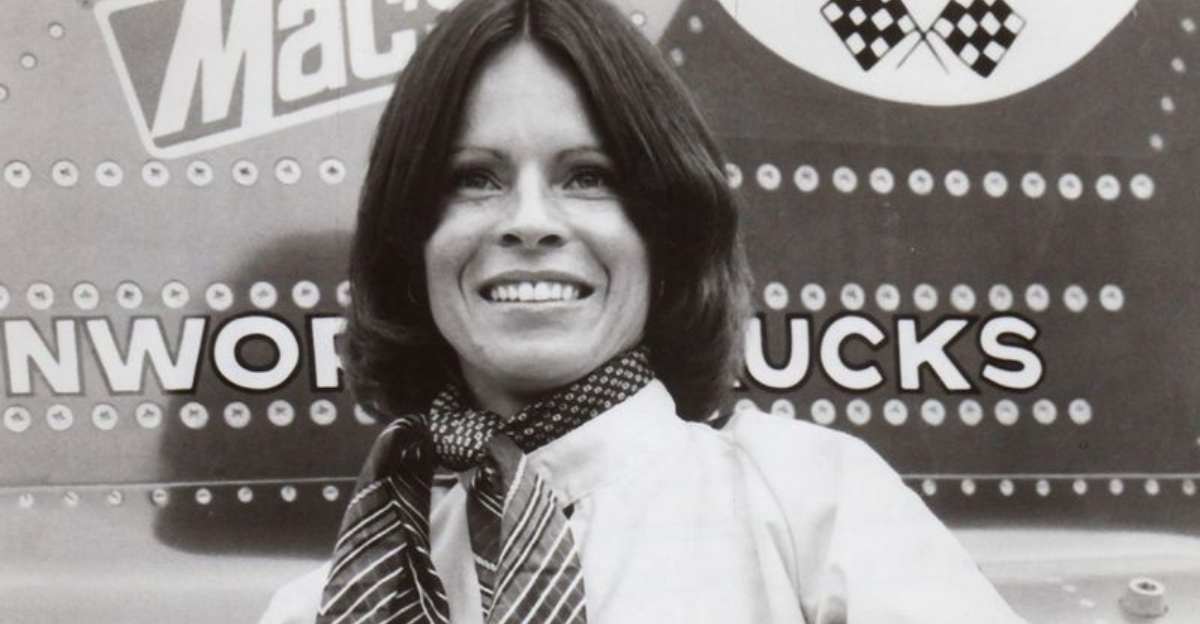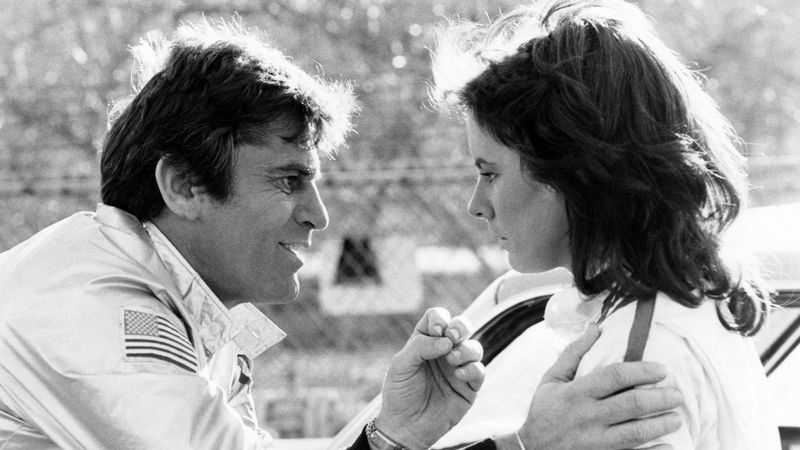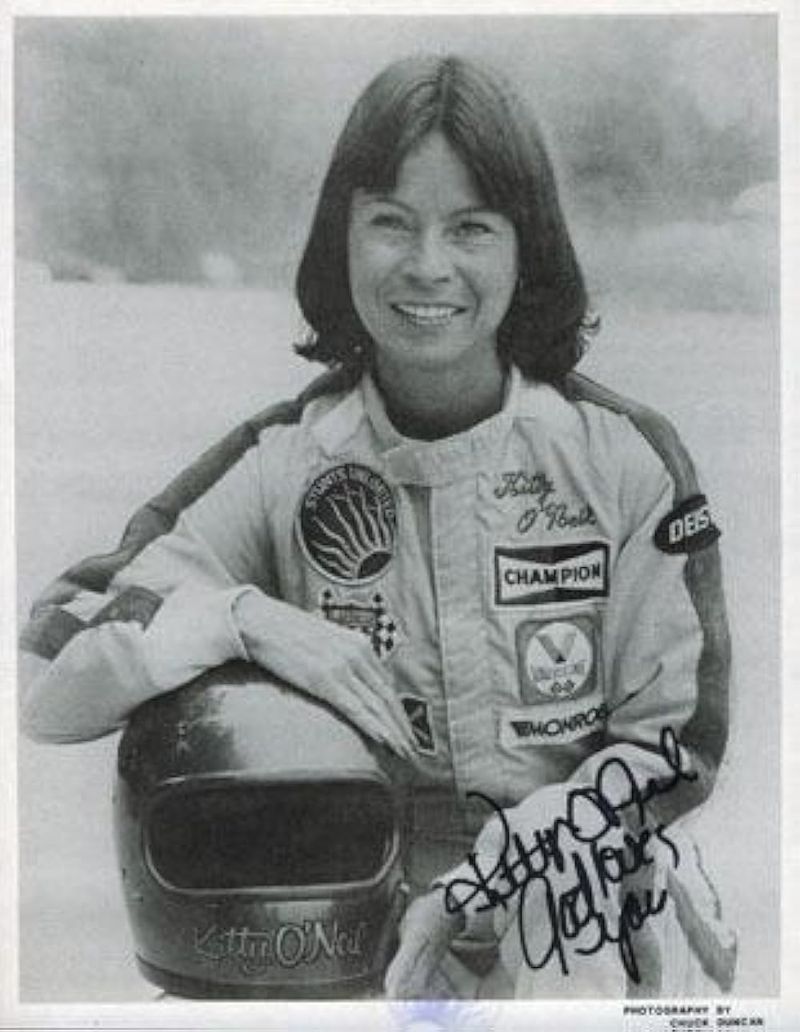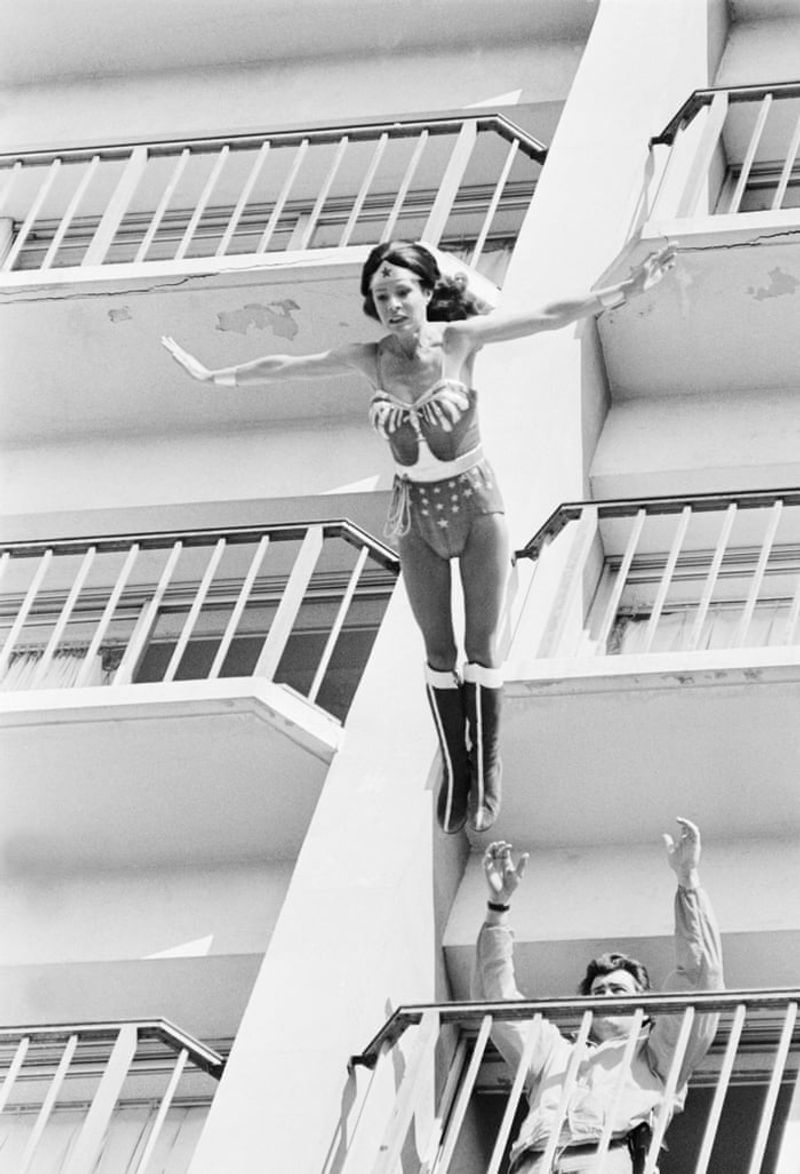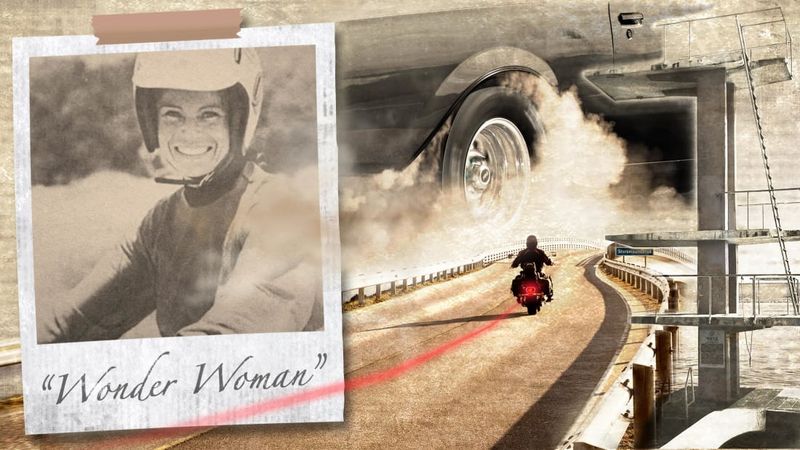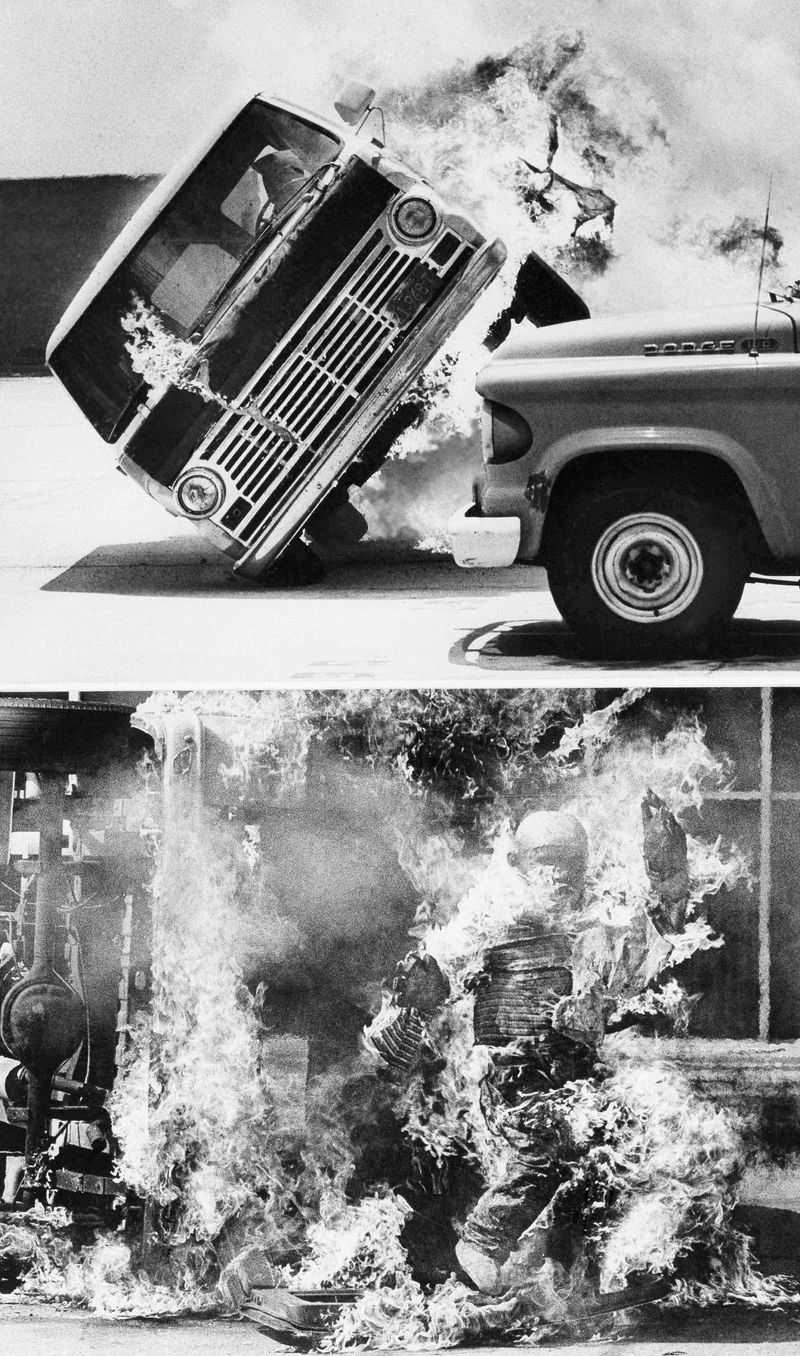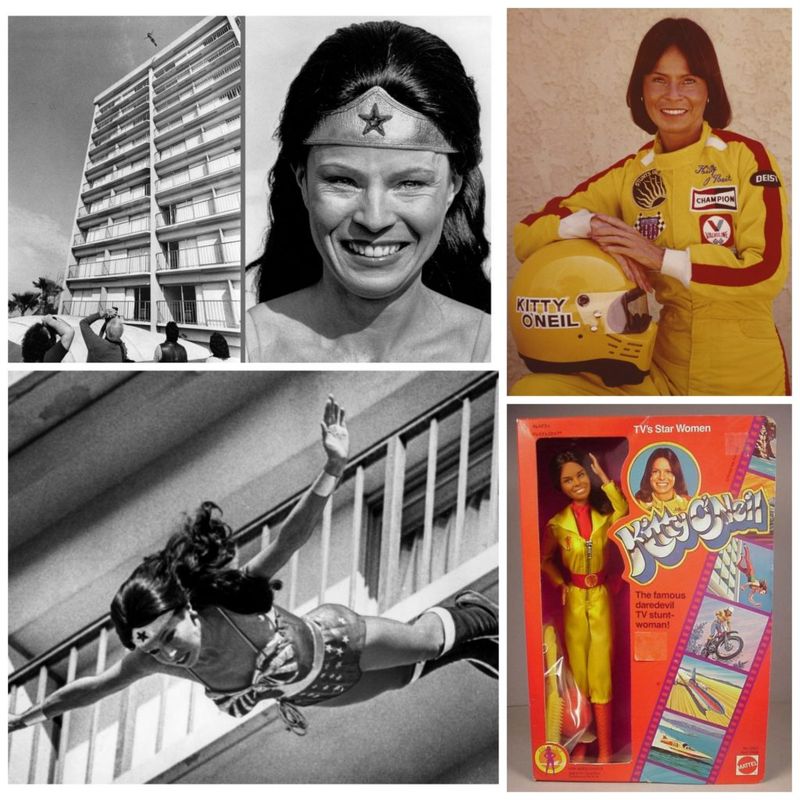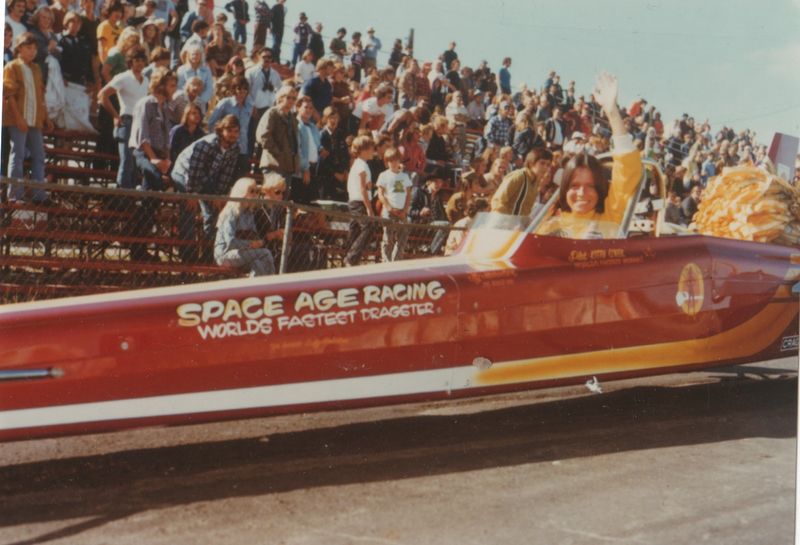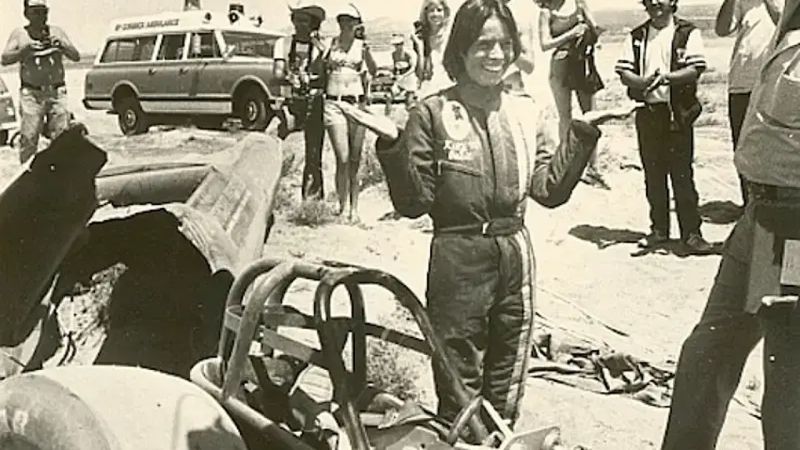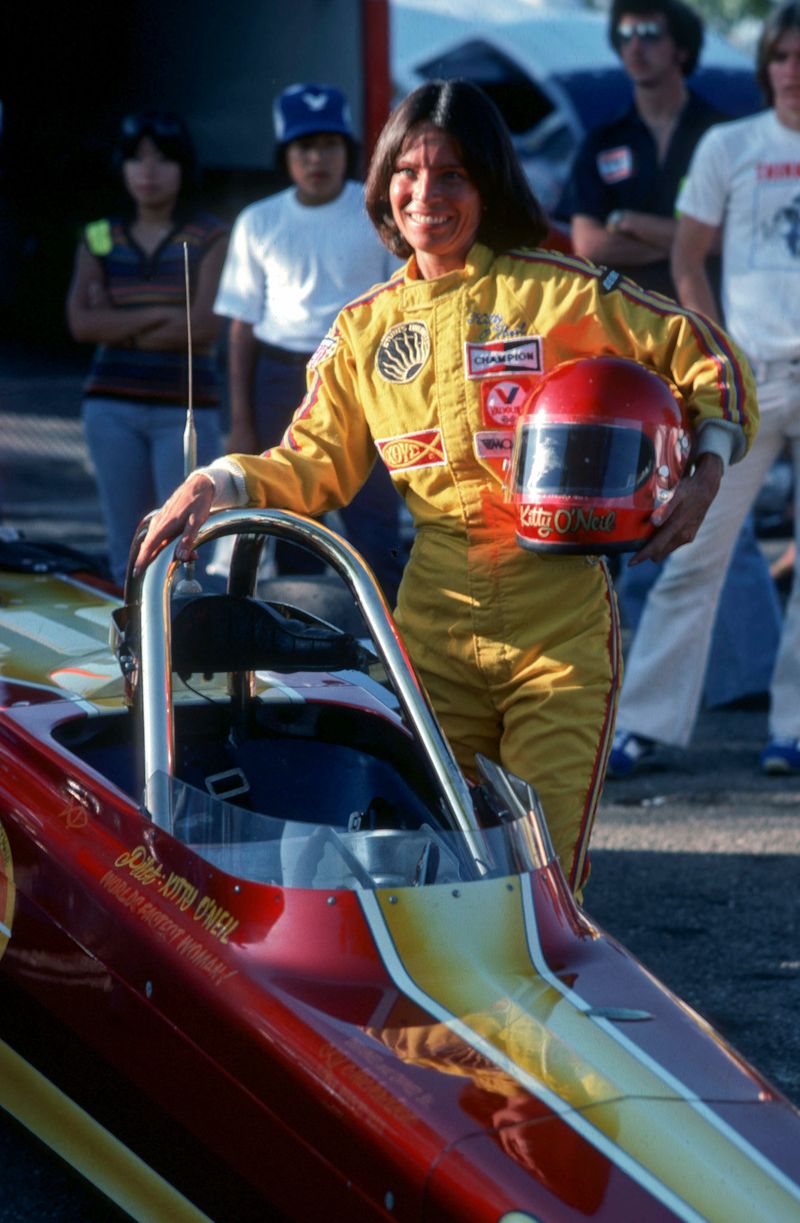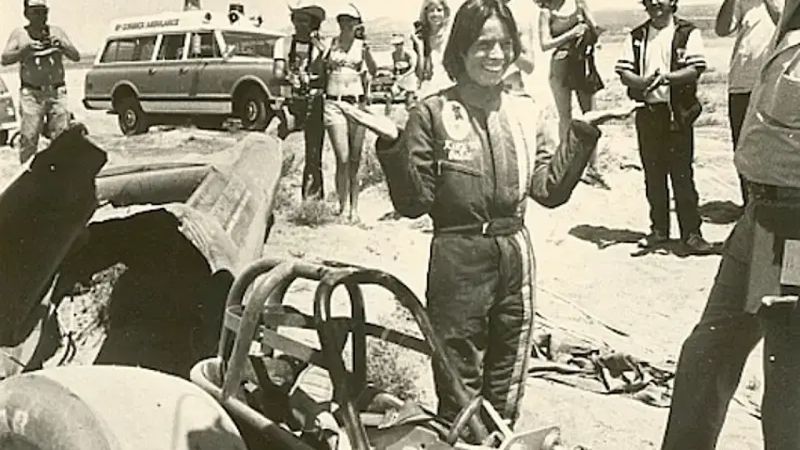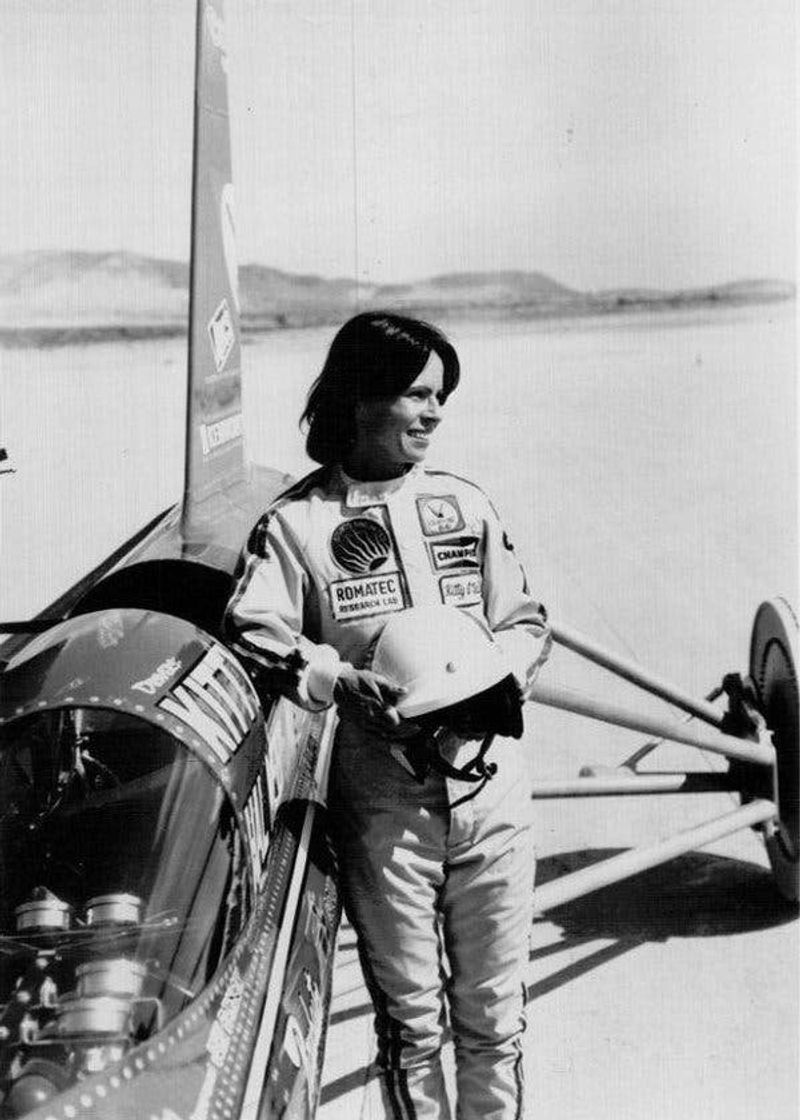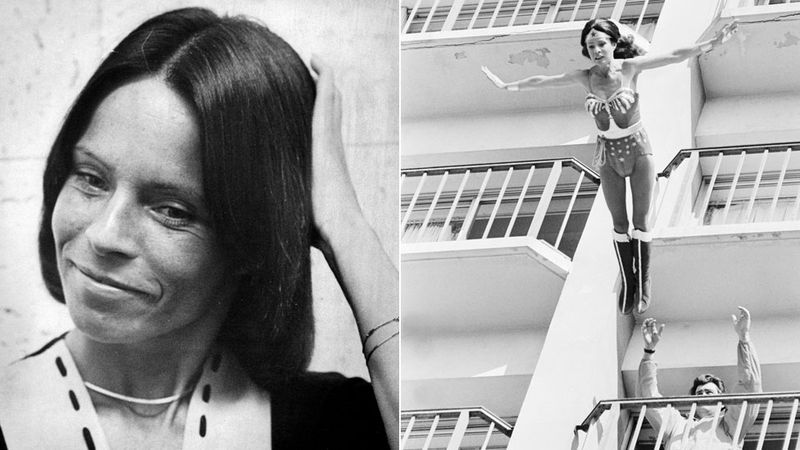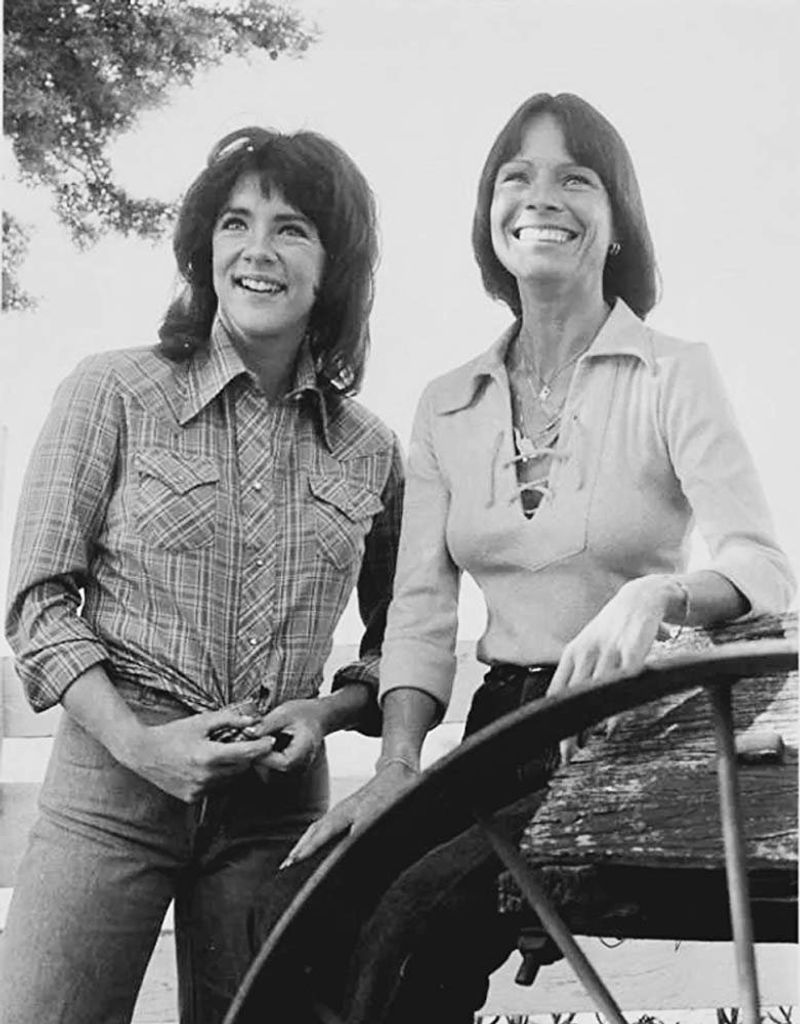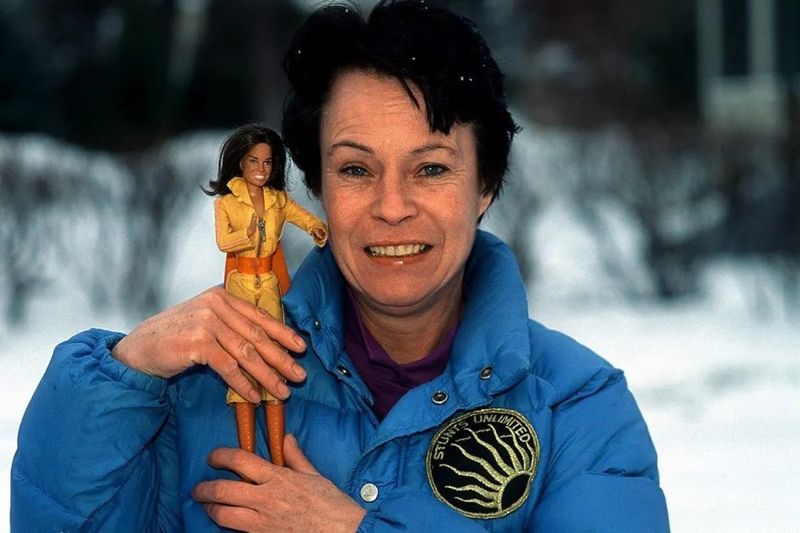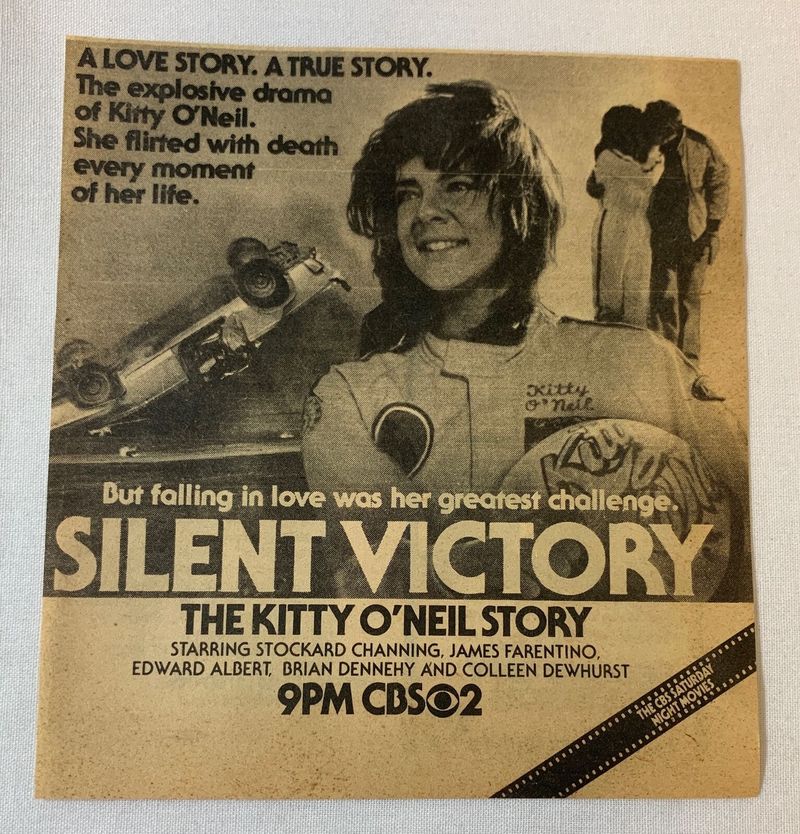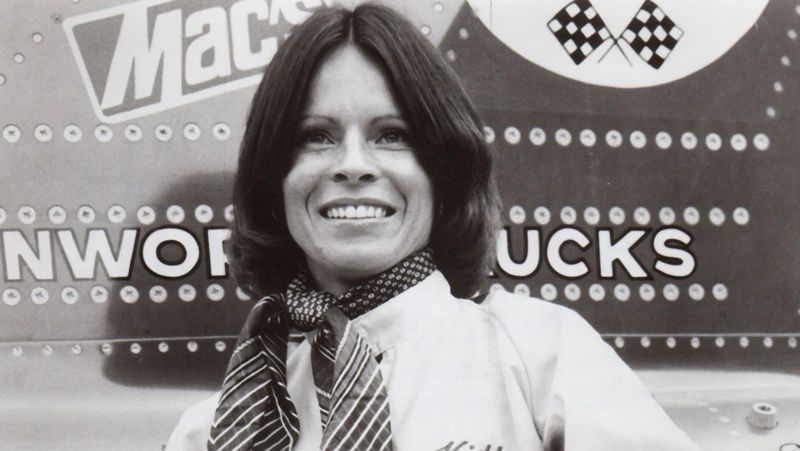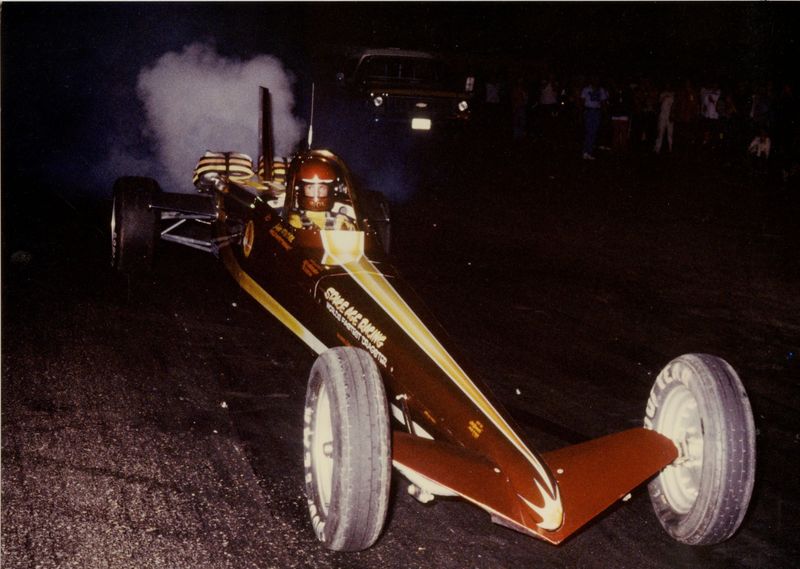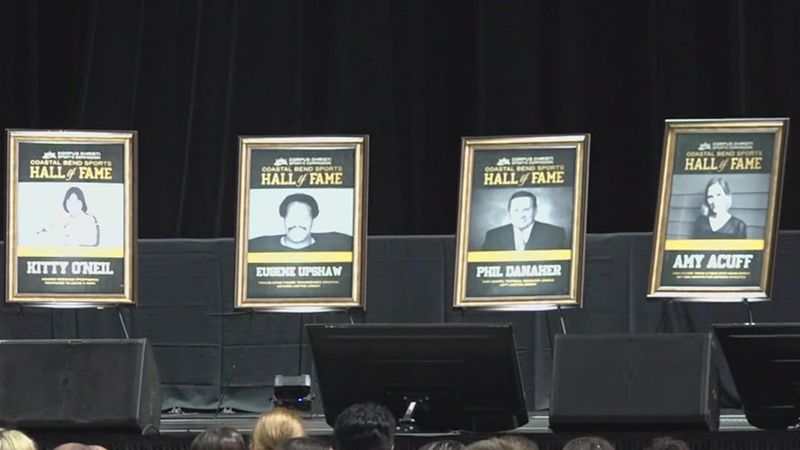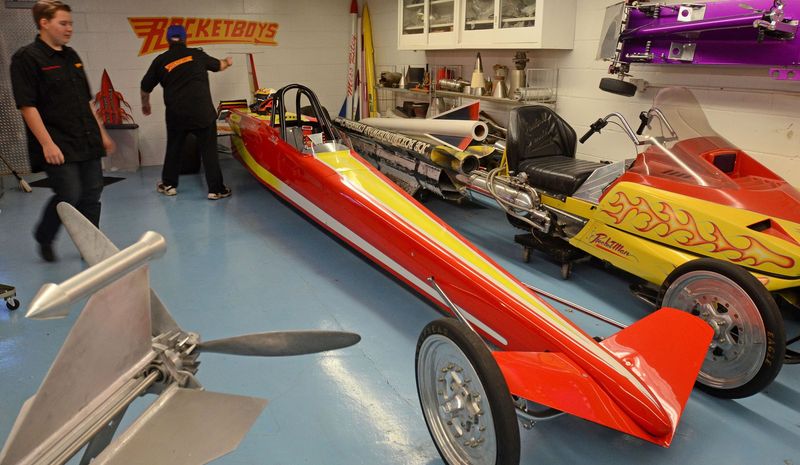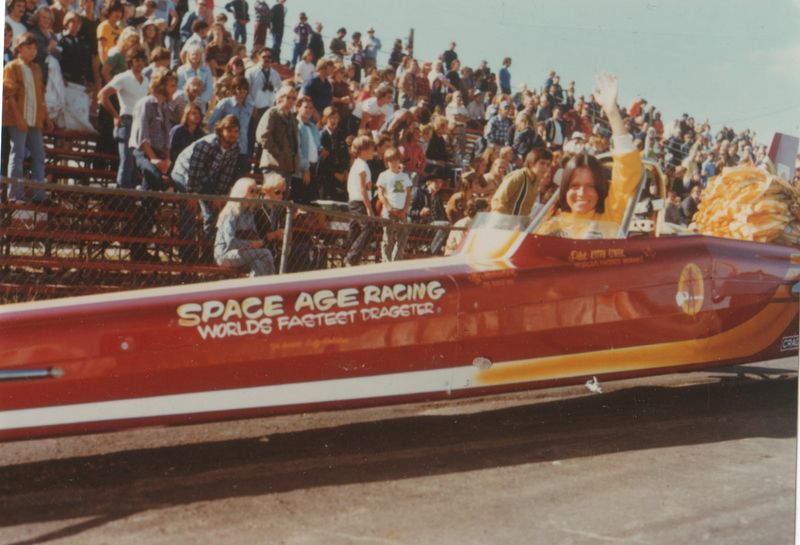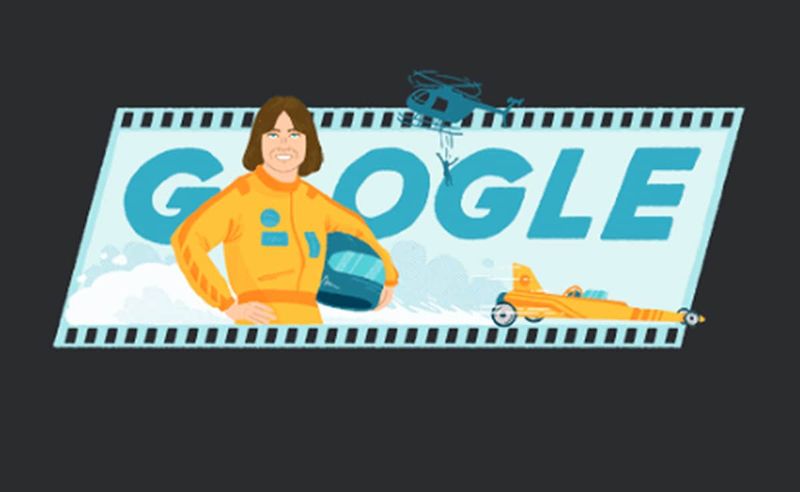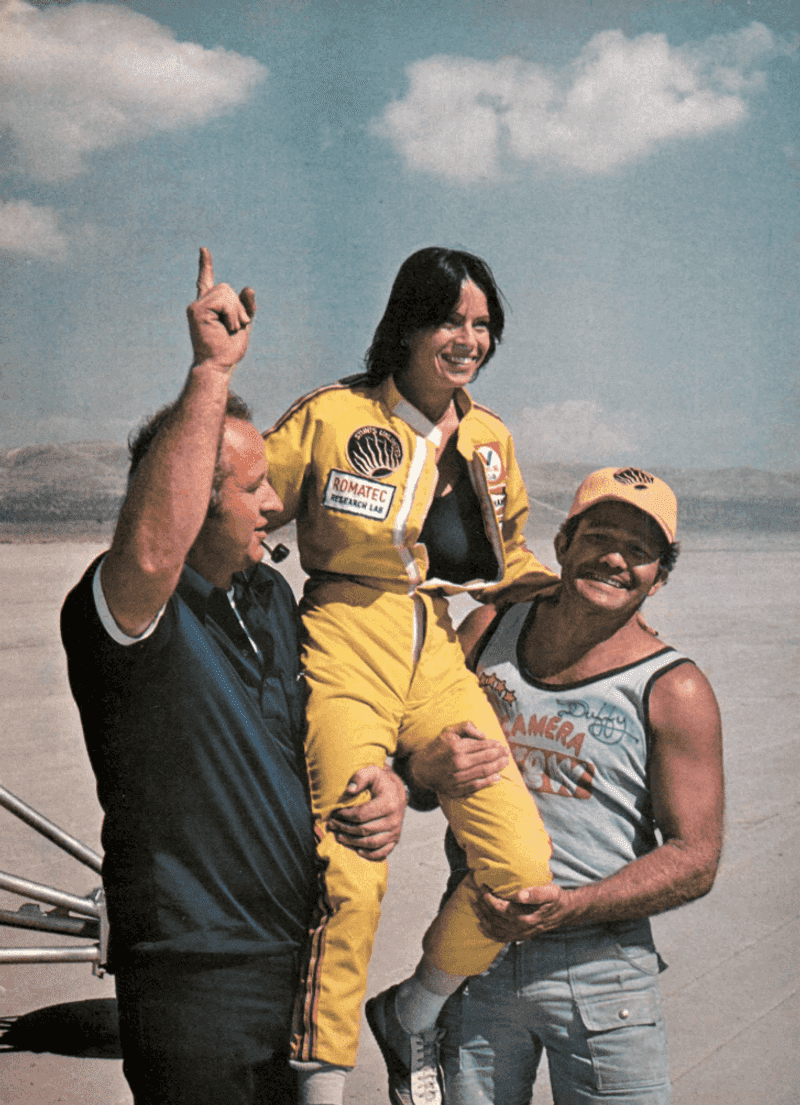Kitty O’Neil was a woman who refused to live within limits. Born in 1946, she lost her hearing as a baby but went on to become one of the most fearless stunt performers in Hollywood history. Beyond her work doubling for television stars, Kitty shattered world speed records and gender barriers throughout the 1970s. Her remarkable journey from deaf child to the fastest woman on Earth remains an inspiring testament to human potential.
1. Silence Became Her Strength
Measles, mumps, and smallpox struck tiny Kitty before she reached six months old, taking her hearing but gifting her with extraordinary focus. Without auditory distractions, she developed an uncanny sense of vibration and visual awareness that would later serve her daredevil career.
Doctors told her mother Patsy that Kitty would face severe limitations, but Patsy refused to accept their prognosis. Instead of seeing deafness as a disability, Kitty learned to harness her heightened senses as an advantage in high-risk situations where split-second timing meant the difference between life and death.
2. A Mother’s Revolutionary Teaching Method
Patsy O’Neil, with Cherokee and Chickasaw heritage, rejected 1940s conventional wisdom that deaf children should be institutionalized. She created her own teaching system, placing Kitty’s hands on her throat so she could feel vibrations while speaking.
This unconventional approach worked brilliantly. By age two, Kitty could form words despite never hearing them. Patsy’s determination extended beyond language—she taught Kitty to play piano by feeling vibrations through the floor.
Their mother-daughter bond formed the foundation of Kitty’s resilience and her lifelong belief that limitations existed only in people’s minds, not in reality.
3. Olympic Dreams Derailed
The water became Kitty’s sanctuary as a teenager in Texas. Her powerful strokes and natural athleticism quickly caught the attention of coaches who saw Olympic potential in the deaf swimmer. Training relentlessly, she qualified for the 1964 Olympic diving trials.
Fate intervened cruelly. At just 17, Kitty contracted spinal meningitis, followed by a devastating bout of spinal paralysis. Doctors predicted she might never walk again, let alone compete.
While recovering in her hospital bed, Kitty watched the Tokyo Olympics on television—the very Games she had dreamed of competing in. This moment of heartbreak would fuel her determination to find new ways to test her limits.
4. The Adrenaline Adventurer
Most people would have settled for safer pursuits after facing paralysis, but Kitty’s recovery sparked an insatiable hunger for thrills. She mastered water skiing on Texas lakes before conquering motorcycle racing, boat racing, and skydiving—often without formal training.
Friends marveled at her fearlessness. “She’d try anything once, and usually excel at it immediately,” recalled fellow stuntwoman Dar Robinson. Her deaf friends worried her adventures were too dangerous, but Kitty simply shrugged off concerns.
By her mid-twenties, she had become proficient in over a dozen extreme sports, establishing a pattern of seeking out and conquering increasingly dangerous challenges throughout her life.
5. Crashing Hollywood’s Boys Club
Hollywood’s stunt industry in 1973 was an exclusive male fraternity with unwritten rules keeping women on the sidelines. Kitty arrived in California with zero industry connections but boundless confidence. After repeatedly being told “we don’t hire women for dangerous stunts,” she challenged a veteran stuntman to a motorcycle race—and won handily.
Word spread quickly about the fearless deaf woman who could outride most men. Legendary stunt coordinator Hal Needham finally gave her a chance on a motorcycle jump scene.
Her flawless execution opened doors previously closed to women. Male stunt performers who initially dismissed her became her biggest advocates after witnessing her technical precision.
6. The Television Heroine’s Secret Weapon
While Lynda Carter’s spinning transformation into Wonder Woman captivated television audiences, it was often Kitty performing the character’s most dangerous feats. Her compact 5’2″ frame matched perfectly with television’s action heroines, making her the go-to double for stars like Lindsay Wagner on “The Bionic Woman.”
Producers valued her ability to communicate through sign language with crew members during noisy action sequences. Her deafness became an advantage during explosive stunts where hearing protection would hamper others.
Though viewers never saw her face, Kitty’s body language and athletic grace gave these iconic female characters their physical credibility and power on screen.
7. Queen of the High Fall
Suspended 127 feet above the ground from a helicopter, Kitty prepared for a world record attempt that even veteran stuntmen avoided. The 1976 high fall onto an inflatable airbag for the television show “Police Woman” required split-second timing and perfect body positioning.
Unlike her male counterparts who relied on audio cues, Kitty developed a visual signaling system with her team. As she plummeted toward earth at nearly 60 mph, witnesses reported she maintained perfect form throughout.
The fall shattered the previous women’s record by over 50 feet. When asked if she was scared, Kitty famously replied through her interpreter: “I’m not afraid of anything. Fear is for people who don’t live their lives.”
8. The Human Torch Who Never Flinched
Engulfed in flames while filming a 1977 episode of “Baretta,” Kitty remained eerily calm as fire consumed her protective suit. The stunt required her to run across the set while completely ablaze for 12 seconds—longer than any female performer had attempted.
Her technique was revolutionary. Rather than rushing to the safety team, she methodically executed her choreography, knowing panic causes most fire stunt injuries. The crew stood transfixed as she completed the scene without rushing.
When the flames were extinguished, she simply signed: “Can we go again? I think I can make it more dramatic.” This unflinching performance cemented her reputation as Hollywood’s most fearless stuntwoman.
9. Breaking the Stunts Unlimited Barrier
Stunts Unlimited represented Hollywood’s elite—an invitation-only group of the industry’s top performers that had never admitted a woman. In 1976, after witnessing Kitty’s exceptional work, legendary stuntman and founding member Hal Needham proposed her membership, sparking fierce debate.
Several old-guard members threatened to resign if a woman joined their ranks. Kitty’s response was characteristically bold: she challenged any opposing member to duplicate her helicopter fall or fire run.
None accepted her challenge. The vote passed narrowly, making Kitty the first female member in the organization’s history and opening doors for a generation of women who followed her into the profession.
10. From Stunt Cars to Rocket Machines
Kitty’s transition from Hollywood stunts to jet-powered vehicles began with a chance meeting with stuntman and race car designer Bill Fredrick in 1975. Watching her handle high-performance vehicles on film sets, he recognized her exceptional reaction time and spatial awareness—both enhanced by her reliance on visual processing.
Fredrick offered her a test drive in his experimental jet dragster. Despite never having driven anything remotely similar, Kitty mastered the basics within hours.
Her unique ability to process visual information and react without audio distractions made her perfectly suited for supersonic speeds. This unexpected talent would transform her from Hollywood daredevil to land speed legend within a single year.
11. The Desert Record That Shocked the World
December 6, 1976 dawned clear and cold on Oregon’s Alvord Desert—perfect conditions for Kitty’s attempt at the women’s land speed record. Her vehicle: the SMI Motivator, a hydrogen peroxide-fueled rocket car generating 48,000 horsepower, capable of accelerating from 0 to 280 mph in just 3.22 seconds.
As morning sun glinted off salt flats, Kitty completed two runs averaging an astonishing 512.71 mph. The previous women’s record of 308 mph wasn’t just broken—it was obliterated.
Most remarkable was her technique. While male drivers typically made steering corrections throughout their runs, film footage showed Kitty maintaining a perfectly straight line across the desert, maximizing her speed through flawless control.
12. Faster Than the Men But Held Back
Few people realize that Kitty’s top speed of 618 mph during test runs actually exceeded the men’s land speed record at that time. Her two-way average of 512.71 mph was officially recorded as the women’s record, but her raw speed capabilities were undeniable.
Team calculations showed the SMI Motivator could potentially reach 750 mph with Kitty at the controls. Engineers marveled at her precise throttle control and unwavering nerve at speeds where most drivers experienced vision distortion and panic.
Racing legend Craig Breedlove, who held multiple land speed records himself, observed her test runs and remarked: “She’s not just the fastest woman—she might be the best rocket car driver alive.”
13. The Corporate Decision That Stopped History
With the women’s record demolished, Kitty set her sights on the absolute land speed record—then 631.367 mph. Her team calculated she could reach 700+ mph in the SMI Motivator with minor modifications. What stopped her wasn’t technical limitations but corporate politics.
The project’s primary sponsor, Hurst Performance, had marketed the attempt as a women’s record specifically. Company executives feared a woman breaking the men’s record would damage their brand image with male customers.
Against Kitty’s protests, they contractually blocked her from making additional runs. “They told me women weren’t supposed to outdo men,” she later told Sports Illustrated. “I didn’t understand that kind of thinking then. I still don’t.”
14. Quarter-Mile Mastery in Jet Dragsters
The thunderous roar of Kitty’s jet dragster—which she couldn’t hear but could feel vibrating through her body—became a regular sensation at drag strips across America. Her quarter-mile runs consistently clocked around 3.5 seconds at speeds approaching 280 mph, dominating the exhibition circuit.
Unlike traditional drag racers who relied on engine sounds to gauge performance, Kitty developed a technique based entirely on physical sensation and visual cues. She could feel subtle changes in acceleration through her body and used specialized light systems for timing.
Competitors often complained about her advantage—an ironic twist considering her deafness was typically viewed as a disability. “My body is my ear,” she explained. “I feel the dragster talking to me through the vibrations.”
15. Hollywood’s Invisible Action Hero
Few moviegoers realized that many of the most spectacular stunts performed by female leads in 1970s action films were actually Kitty’s work. Her IMDB credits list over 75 productions, but colleagues believe she worked on dozens more uncredited.
Her specialties became high falls, fire stunts, and vehicle crashes—the most dangerous categories that few other women would attempt. Directors valued her mathematical precision and preparation, which reduced production insurance costs despite the extreme nature of her stunts.
Filmmaker Steven Spielberg reportedly requested her specifically for dangerous water sequences after seeing her work on “Airport ’77,” where she performed underwater stunts that male performers had declined due to the risks involved.
16. Defying Death Through Meticulous Planning
Despite performing stunts that hospitalized or killed other performers, Kitty never suffered a career-threatening injury. Her secret wasn’t luck but obsessive preparation. For each stunt, she created detailed diagrams and calculations, accounting for variables others overlooked.
Before high falls, she would visit locations at different times to check wind patterns. For vehicle stunts, she personally inspected every mechanical component. This methodical approach earned her the nickname “The Calculator” among stunt coordinators.
When a journalist asked about her apparent fearlessness, she responded: “I’m not brave, I’m thorough. I’ve visualized everything that could go wrong before I ever start. The rest is just execution.”
17. The Action Figure That Inspired a Generation
In 1978, Mattel made history by introducing the Kitty O’Neil action figure as part of their groundbreaking “Courageous Women” collection. This marked one of the first times a real-life female daredevil had been immortalized in toy form during an era when action figures overwhelmingly represented male characters.
The figure came with miniature versions of her rocket car, motorcycle, and stunt equipment. An innovative feature included a special stand that displayed actual world records Kitty had set.
Letters poured in from deaf children who finally had a hero who shared their experience. Kitty insisted Mattel include information about deafness on the packaging, making it possibly the first mainstream toy to positively represent disability.
18. Her Life Story Hits the Small Screen
The 1979 TV movie “Silent Victory: The Kitty O’Neil Story” brought her remarkable journey to millions of viewers with Stockard Channing in the title role. Producers initially wanted to dramatize and exaggerate her achievements, but Kitty insisted on accuracy, serving as technical advisor during filming.
The production made television history by employing deaf actors in supporting roles—a revolutionary concept for 1970s Hollywood. Kitty performed all the driving stunts herself, refusing to allow even Channing’s regular stunt double to take the wheel.
Though the film took creative liberties with her personal life, its unflinching portrayal of discrimination against both women and deaf individuals earned critical praise and strong ratings.
19. Champion for Deaf Visibility
While Kitty never considered herself an activist, her visibility transformed perceptions about deaf capabilities. She regularly visited schools for deaf children, demonstrating that her deafness was irrelevant to her achievements. “I’m not a great deaf stuntwoman,” she would sign. “I’m a great stuntwoman who happens to be deaf.”
Her appearances on popular shows like “To Tell The Truth” and “What’s My Line?” brought sign language into millions of homes. Though interpreters translated her signs, she insisted on signing on camera rather than relying solely on her oral speaking skills.
The Kitty O’Neil Scholarship Fund, established in 1978, continues to support deaf students pursuing careers in science and engineering—fields she believed needed more deaf representation.
20. Engineering Genius Behind the Wheel
Few people realize Kitty wasn’t just a driver but a skilled vehicle engineer who modified her own machines. Working alongside designer Bill Fredrick, she redesigned cockpit layouts to maximize her unique sensory advantages while minimizing distractions.
Her most significant innovation was a specialized vibration feedback system that transmitted critical engine information through tactile sensors in her racing suit. This allowed her to “feel” mechanical problems before instruments could detect them.
Rocket car experts still study her custom control modifications. Her throttle control system, designed to provide more precise incremental acceleration than standard configurations, has influenced modern land speed vehicle designs and is considered a breakthrough in human-machine interface.
21. Hall of Fame Trailblazer
The Stuntwomen’s Association of Motion Pictures created their Hall of Fame in 1977 largely to recognize Kitty’s groundbreaking achievements. As its first inductee, she established the standard for future generations of female stunt performers.
Her induction speech, delivered in sign language, focused not on her own accomplishments but on opening doors for others. “Records are temporary,” she signed, “but changing who gets to participate is permanent.”
The hall’s Kitty O’Neil Courage Award is still presented annually to stuntwomen who demonstrate exceptional bravery and innovation. Recipients receive a miniature replica of her SMI Motivator rocket car, symbolizing how she broke barriers at supersonic speed.
22. NASA Technology in Her Racing Arsenal
Kitty’s rocket vehicles incorporated cutting-edge aerospace technology typically reserved for space exploration. The hydrogen peroxide propulsion system in her SMI Motivator was derived directly from NASA orbital maneuvering thrusters, modified for horizontal rather than vertical thrust.
Her racing suit featured experimental fire-resistant materials developed for Apollo missions. The helmet she wore during her record-breaking run contained communication systems designed for astronauts, though she relied on the visual display components.
NASA engineers consulted on her Alvord Desert record attempt, providing specialized telemetry equipment to measure forces her body experienced at 500+ mph. This data later informed astronaut training programs for high-acceleration scenarios during shuttle missions.
23. Media Sensation as “The Fastest Woman”
After her desert record, Kitty became an overnight media sensation. Her 512.71 mph achievement made front pages worldwide, and her unique story—deaf woman conquers male-dominated speed racing—captivated the public imagination during the height of the women’s liberation movement.
Johnny Carson featured her on “The Tonight Show” with an interpreter, marking one of the first primetime appearances of sign language on network television. Sports Illustrated’s cover declared her “The Speed Queen” in their February 1977 issue.
Feminist organizations embraced her as a symbol of women’s potential, though Kitty herself avoided political labels. “I didn’t break the record because I’m a woman or because I’m deaf,” she famously signed. “I broke it because I was the best driver that day.”
24. Google Doodle Recognition
On March 24, 2019, Google honored Kitty with an animated Doodle commemorating what would have been her 72nd birthday. The vibrant illustration captured her racing across the Alvord Desert in her rocket-powered SMI Motivator, introducing her remarkable story to a new generation.
The Doodle reached billions worldwide and sparked renewed interest in her achievements. Google’s accompanying biography emphasized how she transformed perceptions about both women and deaf individuals in sports and entertainment.
Deaf advocacy groups praised the Doodle for its accurate representation and for including information about American Sign Language in the educational materials that accompanied it. The animation became one of Google’s most shared Doodles of 2019.
25. Philosophical Approach to Limitations
Throughout her life, Kitty maintained a unique philosophy about limitations that continues to inspire. “Deaf doesn’t mean broken,” she often signed. “It just means I experience the world through my eyes instead of my ears.”
When faced with gender barriers, she applied the same perspective. After being told women couldn’t handle certain stunts, she would simply ask for the technical specifications and then demonstrate her capabilities without argument.
Her approach to physical challenges was similarly matter-of-fact. After recovering from spinal paralysis as a teenager, she developed a personal mantra: “The only true disability is believing you’re disabled.” This philosophy guided her through multiple world records and life-threatening stunts.
26. Legacy That Transcends Records
Though Kitty passed away in 2018 at age 72, her influence extends far beyond her speed records. The Kitty O’Neil Effect is now recognized in sports psychology—describing athletes who use perceived disadvantages as motivational fuel.
Her impact on Hollywood remains evident in stunt safety protocols she pioneered. The “O’Neil Method” of systematic stunt preparation is still taught to newcomers in the industry. Her custom-designed safety equipment has evolved into standard protection used by stunt performers worldwide.
Perhaps most significantly, deaf athletes frequently cite her as their inspiration. As Olympic deaf swimmer Marcus Titus noted: “Kitty showed us that being deaf isn’t just about what you can’t hear—it’s about what you can accomplish despite what others think you can’t do.”
